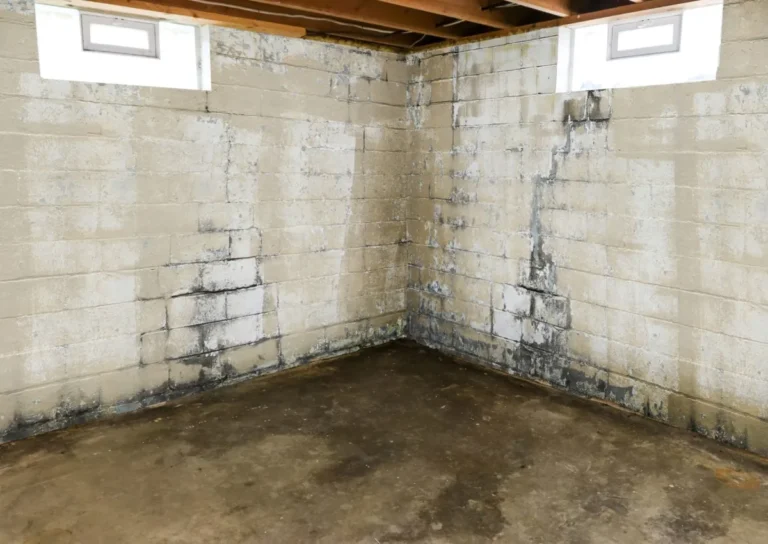What are the Different Types of Waterproofing for Basements? Ultimate Guide
Different types of waterproofing for basements include exterior waterproofing, interior waterproofing, and drainage systems. These methods effectively prevent water intrusion and protect the foundation.
Basements often face moisture issues, making waterproofing essential for homeowners. Excess water can lead to mold, structural damage, and unpleasant odors. Various waterproofing techniques can safeguard your basement against these problems. Understanding the options available helps you choose the best solution for your property.
Need Service: Basement Waterproofing Springfield MA
Exterior waterproofing involves applying a waterproof membrane to the foundation walls, while interior waterproofing uses sealants to block moisture. Proper drainage systems also play a crucial role in managing water flow. Investing in reliable waterproofing not only enhances comfort but also boosts property value, making it a wise choice for any homeowner.
Introduction To Basement Waterproofing
Basement waterproofing is crucial for home protection. It prevents water from entering your basement. Keeping basements dry ensures a safe and healthy living space.
Importance Of Keeping Basements Dry
Dry basements contribute to a comfortable home. Here are key reasons to keep basements dry:
- Prevents Mold Growth: Moisture leads to mold. Mold can cause health problems.
- Protects Foundation: Water can weaken the foundation. A strong foundation supports the entire house.
- Improves Air Quality: Dry air is healthier. It reduces allergens and odors.
- Increases Home Value: A dry basement adds value. Potential buyers appreciate a well-maintained space.
Consequences Of Water Damage
Water damage can be severe and costly. Here are some consequences:
| Consequence | Description |
|---|---|
| Mold and Mildew | Can spread quickly and harm health. |
| Structural Damage | Water can weaken walls and floors. |
| Property Value Loss | Water damage can lower home value. |
| Insurance Issues | Many policies do not cover water damage. |
Understanding these consequences highlights the need for proper waterproofing.
Internal Waterproofing Methods
Internal waterproofing methods focus on protecting your basement from moisture. They help manage water that seeps into your home. These methods can be effective and less invasive than external options. Here are two common internal waterproofing techniques.
Sealants And Epoxy Injections
Sealants are liquid materials applied to walls and floors. They create a barrier against moisture. Sealants are easy to use and can be a DIY project.
- Types of Sealants:
- Acrylic Sealants
- Polyurethane Sealants
- Silicone Sealants
- Benefits:
- Quick application
- Cost-effective
- Prevents mold growth
Epoxy injections are used for cracks in the basement walls. This method fills gaps and prevents water from entering. It is more durable than sealants.
Steps for Epoxy Injection:
- Clean the crack area.
- Apply a bonding agent.
- Inject epoxy into the crack.
- Allow it to cure as per instructions.
Interior Water Drainage Systems
Interior water drainage systems manage water inside the basement. They redirect water to prevent flooding. These systems include sump pumps and drainage tiles.
| Type | Description | Benefits |
|---|---|---|
| Sump Pump | Removes water from the basement. | Automatic operation, effective for large volumes. |
| Drainage Tiles | Installed around the basement perimeter. | Helps collect and redirect water. |
Choose the right internal waterproofing method for your home. Proper installation ensures long-lasting protection against moisture.
External Waterproofing Solutions
External waterproofing solutions protect basements from water damage. They keep moisture out and maintain a dry environment. These methods are effective and long-lasting. Here are two main types: exterior membranes and coatings, along with foundation drainage strategies.
Exterior Membranes And Coatings
Exterior membranes are barriers applied to the outside of the foundation. They prevent water from seeping into the basement. Common materials include:
- Bituminous membranes
- Rubberized asphalt
- Polyethylene sheets
Coatings offer another protective layer. They can be applied directly to the foundation walls. These coatings are usually cement-based or polymer-based. They create a strong bond, resisting water penetration. Both membranes and coatings require proper installation for effectiveness.
| Type | Description | Advantages |
|---|---|---|
| Bituminous Membranes | Flexible, sticky material used on foundation walls. | Excellent waterproofing and durability. |
| Rubberized Asphalt | Thick, elastic material that seals surfaces. | Adapts to temperature changes, preventing cracks. |
| Polyethylene Sheets | Plastic sheets are used as a barrier. | Lightweight and easy to install. |
Foundation Drainage Strategies
Foundation drainage strategies manage water flow around the home. Proper drainage prevents water accumulation near the foundation. Here are key strategies:
- French Drains: Channels that redirect water away from the foundation.
- Grading: Sloping the landscape away from the house.
- Downspout Extensions: Directing roof runoff further from the foundation.
Implementing these strategies enhances the effectiveness of waterproofing methods. They work together to create a robust defense against water damage.
Read More: What is the best method for waterproofing?
Waterproofing Materials And Products
Choosing the right waterproofing materials is essential for basement protection. Various products are available to help seal and protect your space. Understanding these options can prevent water damage and mold growth.
Choosing The Right Sealant
Sealants play a vital role in waterproofing. They block moisture from entering your basement. Here are some common sealant types:
- Acrylic Sealants: Easy to apply and paintable.
- Polyurethane Sealants: Flexible and durable for concrete.
- Silicone Sealants: Waterproof and ideal for non-porous surfaces.
Selecting the right sealant depends on your basement’s specific needs. Consider the surface type and the moisture level.
Advanced Waterproofing Technologies
New technologies improve basement waterproofing. Here are some advanced solutions:
| Technology | Description |
|---|---|
| Liquid Rubber | Creates a seamless waterproof barrier. |
| Membrane Systems | Uses waterproof membranes to block moisture. |
| Drainage Systems | Directs water away from basement walls. |
These technologies offer long-lasting protection. They help keep your basement dry even during heavy rain.
Professional Vs. Diy Waterproofing
Waterproofing your basement is essential. Choosing between professional help or a DIY approach can be tricky. Each method has its pros and cons. Understanding these can save time and money.
Evaluating The Diy Approach
DIY waterproofing can be cost-effective. Many homeowners opt for this route to save money. Here are some common DIY methods:
- Sealant application
- Interior drainage systems
- Exterior grading adjustments
Benefits of DIY:
- Lower costs
- Flexibility in scheduling
- Hands-on experience
Consider these factors before starting:
- Evaluate your skill level.
- Assess the severity of the issue.
- Research proper techniques and materials.
DIY can be rewarding. However, it requires careful planning and execution.
When To Call In The Professionals
Some situations demand professional help. Complex issues might be beyond DIY capabilities. Consider hiring experts when:
- Water damage is severe.
- Structural problems exist.
- Time is limited.
Benefits of hiring professionals include:
- Expert knowledge
- Access to specialized tools
- Long-term warranties on work
Professionals can provide tailored solutions. They offer peace of mind for significant projects.
Read More: What type of basement waterproofing is best?
Maintenance And Upkeep
Proper maintenance and upkeep of your basement waterproofing system are crucial. Regular care helps prevent costly repairs and water damage. Staying proactive ensures a dry and safe basement.
Routine Checks And Repairs
Routine checks help identify potential problems early. Follow these steps for effective maintenance:
- Inspect walls for cracks and leaks.
- Check drainage systems for blockages.
- Look for signs of mold or mildew.
- Test sump pump functionality monthly.
Here’s a simple checklist:
| Task | Frequency |
|---|---|
| Inspect walls | Every 6 months |
| Clean gutters | Seasonally |
| Test sump pump | Monthly |
Make repairs immediately to avoid bigger issues. Use waterproof sealants for small cracks. Consider hiring a professional for extensive repairs.
Long-term Waterproofing Care
Long-term care extends the life of your waterproofing system. Follow these tips for lasting effectiveness:
- Maintain proper drainage around the foundation.
- Apply waterproof coatings every few years.
- Keep landscaping sloped away from the home.
Invest in high-quality materials for durability. Regular maintenance saves money over time. A well-cared-for basement remains dry and safe for years.
Cost Considerations
Understanding the costs of basement waterproofing is crucial. Different methods come with various price tags. Homeowners must consider both initial costs and long-term savings. This section covers budgeting and a cost-benefit analysis of different waterproofing methods.
Budgeting For Basement Waterproofing
Creating a budget for basement waterproofing involves several steps:
- Assess your current basement condition.
- Research various waterproofing methods.
- Get quotes from contractors.
- Consider DIY options to save money.
Here are some common methods and their estimated costs:
| Waterproofing Method | Estimated Cost |
|---|---|
| Interior Sealants | $500 – $2,000 |
| Exterior Excavation | $5,000 – $15,000 |
| Sump Pump Installation | $1,000 – $3,000 |
| Drainage Systems | $3,000 – $10,000 |
Cost-benefit Analysis Of Different Methods
Analyzing costs versus benefits helps make informed choices. Here’s a quick breakdown:
- Interior Sealants: Low cost, quick application. Effective for minor leaks.
- Exterior Excavation: High cost, extensive work. Provides long-lasting protection.
- Sump Pumps: Moderate cost, effective for water accumulation. Requires regular maintenance.
- Drainage Systems: High initial cost, but protects against severe flooding.
Consider the following factors:
- Location of your home.
- Current basement issues.
- Desired durability and effectiveness.
Investing wisely in waterproofing can save money on repairs. Effective waterproofing prevents mold, and structural damage, and increases home value.
Read More: Which is the cheapest basement waterproofing method?
Future Of Basement Waterproofing
The future of basement waterproofing is exciting. New technologies and methods are emerging. These innovations promise better protection and efficiency. Homeowners can expect sustainable solutions that last longer.
Emerging Trends And Innovations
Innovations in basement waterproofing are changing the industry. Here are some key trends:
- Smart Technology: Sensors detect moisture levels in real time.
- Advanced Membranes: New membranes provide better waterproofing.
- Drainage Systems: Improved systems enhance water flow management.
These innovations offer homeowners reliable options. They improve overall basement health and safety.
Sustainability In Waterproofing
Sustainability is a vital focus in basement waterproofing. Eco-friendly materials are becoming common. Here’s how:
| Material Type | Benefits |
|---|---|
| Recycled Plastics | Durable and environmentally friendly. |
| Bamboo Fiber | Renewable and biodegradable options. |
| Natural Sealants | Non-toxic and safe for indoor use. |
Sustainable options help protect the environment. They also provide effective waterproofing solutions.
Frequently Asked Questions
What Is Waterproofing For Basements?
Waterproofing for basements is a method used to prevent water intrusion. It protects the structure from moisture damage. This process involves various techniques and materials designed to create a barrier against water. Effective waterproofing ensures a dry, safe living space while preserving the integrity of your home.
Why Is Basement Waterproofing Important?
Basement waterproofing is crucial to prevent mold growth and structural damage. Excess moisture can weaken foundations and lead to costly repairs. A dry basement improves air quality and enhances living conditions. Proper waterproofing measures also increase your home’s value and longevity, making it a wise investment.
What Are The Types Of Basement Waterproofing?
There are several types of basement waterproofing, including interior and exterior systems. Common methods include sealants, drainage systems, and sump pumps. Each method serves a specific purpose and is suited to different conditions. Choosing the right type is essential for effective moisture control.
How Much Does Basement Waterproofing Cost?
The cost of basement waterproofing varies based on several factors. These include the size of the basement and the chosen method. On average, homeowners can expect to spend between $1,500 and $5,000. It’s advisable to obtain multiple quotes to ensure the best value for your project.
Conclusion
Choosing the right waterproofing method for your basement is essential. Each type has its advantages and specific applications. Understanding these options helps protect your home from water damage. Invest time in research and select the best solution for your needs.
A dry basement contributes to a healthier living environment.




